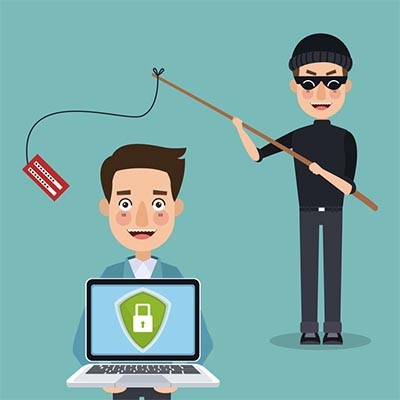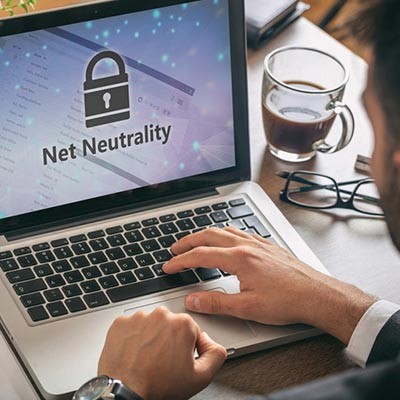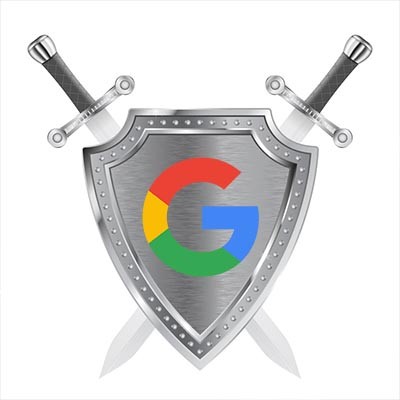It can be a real head-scratcher when one of your otherwise well-performing employees routinely falls for the simulated phishing attacks that you roll out as a part of your cybersecurity awareness strategy. For all intents and purposes, the person is a great employee, but when it comes to acting with caution, they fail. If you’ve made a point to prioritize your staff’s working knowledge of phishing attacks, do you replace this employee? We’ll take a look at it today.
Washington Works Blog
In the late 1970s and early 1980s, Bell telephone companies were making a mint off of offering the ability to call your friends and family that lived outside your predefined region, charging up to $2 per minute (during peak hours) for long distance calls. The problem for many people was that these regions kept shrinking. Some people decided to combat this costly system by reverse engineering the system of tones used to route long-distance calls, thus routing their own calls without the massive per-minute charges demanded by long-distance providers. These people were called Phreakers, and they were, in effect, the first hackers.
Avoiding risk is important for every business, unless your business is as a daredevil, then mitigating risk will have to do. Nowadays, with technology being an omnipresent element in most businesses, technology-based risks have grown in concert. As a result, the modern business owner and IT administrators need to understand the new risks and how to proactively work toward avoiding (or mitigating) them.
2018 will be remembered as the year where data privacy was altered forever. From Facebook’s many problems to the launch of the European Union’s General Data Protection Regulation, data privacy has never been a bigger issue than it is today. Let’s take a look at how the GDPR has affected the computing world in 2018-19 and how the past year’s events have created new considerations in individual data privacy.
Cloud-based databases are valuable for businesses on plenty of levels, but when you consider how much risk you expose your organization to by using a public cloud over a private solution, you suddenly start to realize that the ramifications could be far beyond repair. Compared to the public cloud, a private solution presents a greater opportunity for security, flexibility, and customization.
Businesses have a lot of data to protect and it’s not so simple as implementing a catch-all solution that can keep your data secure. In fact, it takes several solutions working in tandem to maximize data security. We recommend a combination of a unified threat management tool, a Bring Your Own Device policy, and a virtual private network solution. Let’s take a longer look at them:
All that stands between hackers and your accounts’ data, be it personal information or sensitive business info, is a measly string of characters that may (or may not) be complex enough to thwart their attacks. We’re talking about your passwords, and for many businesses, they are the only thing protecting important data. We’ll walk you through how to make sure your passwords are as complex as possible, as well as instruct you on how to implement additional security features to keep your data locked down.
Unfortunately, one of the most effective defenses against phishing attacks has suddenly become a lot less dependable. This means that you and your users must be ready to catch these attempts instead. Here, we’ll review a few new attacks that can be included in a phishing attempt, and how you and your users can better identify them for yourselves.
When we write about Net Neutrality, we typically write about how it is designed to keep the telecommunications conglomerates, who make Internet service available to individuals on the Internet, honest when laying out their Internet service sales strategy. One way to put it is that without net neutrality in place, the Big Four (which are currently Comcast, Charter, Verizon, and AT&T) have complete control over the amount of Internet their customers can access.
When encryption is discussed, one of its high points that business professionals try to hammer home is that it’s more secure. But what does encryption really mean for businesses? Does it adequately protect data and devices? We’ll walk you through a brief rundown of how encryption works and the role it plays in keeping your business secure.
Late in the summer this past year there were several articles written about how Google would continue to track the location of a person’s smartphone after they had chosen to turn their location settings off. A Princeton researcher corroborated those claims for the Associated Press, traveling through New York and New Jersey with locations services off only to be tracked the entire way. Today, we will discuss this issue, and tell you what you need to know to keep Google from tracking you wherever you go.
Email is a core component to many businesses. With 124.5 billion business emails being sent and received each day, that doesn’t seem to be in danger of ending. Are the emails that are coming and going from your business secure? That may be another story, altogether. In order to keep your email security at a premium, we have outlined the following tips:
Data security isn’t the easiest thing in the world to plan for, especially if your organization doesn’t have any dedicated security professionals on-hand. While protecting your data with traditional methods, like passwords, firewalls, and antivirus, is important, what measures are you taking to make sure a thief or hacker isn’t just walking into your office and making off with your technology?
Chances are you have a Google account, whether it’s for business or personal use. It’s more accessible today than ever before and provides a solid way to gain access to several important features and accounts. Considering how much can be done with a Google account, users forget that they can put their security and personal data at risk. Here are some ways that your Google account is at risk, as well as what you can do to fix it.
Scammers find the holidays to be a wonderful time for stealing from unsuspecting victims. They know that the gift-giving season inspires others to spend a lot of money, which means that sensitive information, like credit card numbers, is up for grabs in bulk. As a consumer yourself, you’ll have to keep an eye out for these scams to make sure that you’re staying as safe as possible this holiday season.
We’re right in the thick of the holiday season, which means two things: one, there’s a lot of data being exchanged between businesses and consumers, and (on a related note) two: there’s ample opportunities for cybercrime, targeting business and consumer both. Whichever side of the coin you are on at any moment, you need to be aware of the risks, and how to mitigate them.
Wireless Internet access for a user’s devices isn’t just a luxury these days--it’s expected. If the Wi-Fi drops out for any reason at all, chaos strikes, rendering any ability to stream content or access the Internet a moot point. This is particularly the case for businesses that have technology solutions reliant on wireless access. How can you make sure your wireless network is as strong and reliable as possible?




















